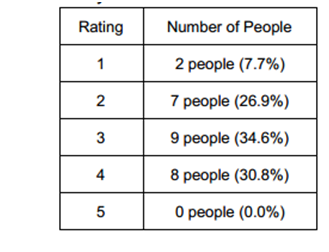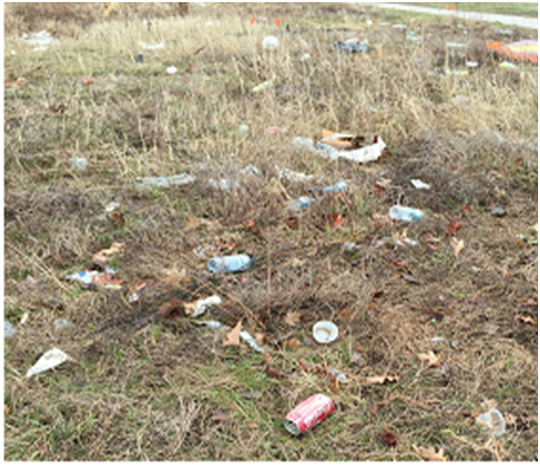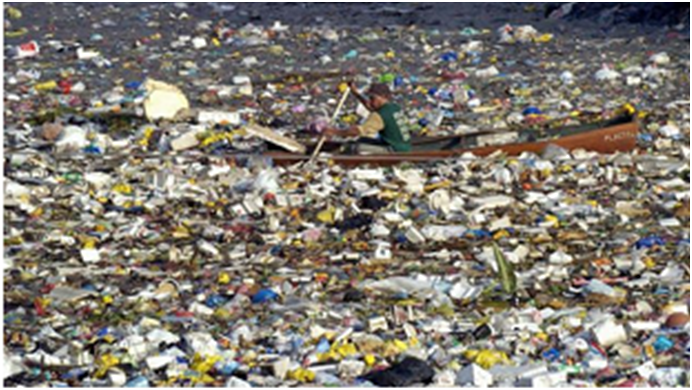
Sarah Goodstadt
Palermo Public School (Oakville, ON)
Now You See It, Now You Don’t: Plastic Pollution Near and Far
I sit at the kitchen table on a quiet Sunday afternoon watching my sister fiddle with a Kinder Egg Surprise. It’s a cute little yellow plastic egg with a surprise toy inside. A few months ago, I would have wondered what surprise was waiting to be discovered. Today, I wonder less about that surprise and more about the part that little egg here in my house plays in the worldwide plastic pollution problem.
The reality is this: Everywhere we look and everywhere we go, we are surrounded by plastic. It’s wrapped around our paper towel, covering our candy, and packaging our milk. And that’s great! Plastic is durable, convenient and very low cost; that is why it is being used it more and more industrial and consumer products. But what about the impact of all that plastic? Where is it going? Are we doing enough to keep our planet safe?
I set out to learn more about plastic pollution in my community and how it impacts the world we live in. I surveyed the staff at Palermo Public School and asked a variety of questions about plastic pollution. For example, I asked what survey participants thought plastic pollution was, where they had seen plastic pollution lately and their thoughts on how plastic pollution has a global effect. I received 26 responses to my survey and the results were clear: Participants in my survey all saw examples of plastic pollution in our community. In particular, two aspects of plastic pollution were identified: (1) the use of plastics that aren’t recyclable, and (2) the improper disposal of plastics that are recyclable. Many participants noted the presence of discarded plastic water bottles, food containers and grocery bags littering our parks, pathways and highways.
I also asked participants to rate the level of plastic pollution in my community. A rating of 5 meant there was no plastic pollution whatsoever. A rating of 1 meant there is plastic pollution everywhere. Here were the results.

These results clearly suggest plastic pollution is a concern for my community!
So I began to wonder: We seem to recognize plastic pollution as a problem, but has it become so commonplace to see plastic littering our community that we no longer really see it? Is there so much of it that it’s become almost invisible to us? The problem of plastic pollution in our community is one that we can see and we can fix. Yet, it seems as though we see issues like these so often in our day to day life that they have become normal to us! Why have we let them become invisible to us? They should be the exact opposite of that!
As I began to do more research and learn more, I discovered a plastic pollution problem we don’t see in our everyday lives: The Great Pacific Garbage Patch. It’s this type of problem that makes it important for us to take steps in our community to really see the plastic pollution around us. Because if we aren’t solving the problems right in front of us, how are we going to solve the larger plastic problems that we can’t see?
In 1997, Charles Moore, a surfer, scientific researcher and sea captain discovered a large collection of plastic and other garbage in the north Pacific Ocean. The Great Pacific Garbage Patch is an area where little bits of garbage and plastic have been caught by the currents of the North Pacific Gyre. According to Earth Island Journal, these bits of plastic and garbage weigh together as much as 100 million tons! The Great Pacific Garbage Patch is also full of microplastics. These are tiny bits of plastics that have been broken down by the sun through a process called photodegradation. Charles Moore claims that if any country were to clean up the Great Pacific Garbage Patch they would go bankrupt. According to National Geographic, the Great Pacific Garbage Patch is so far away from any coastline that no country or nation will take responsibility to clean it up or even provide money for another country to clean it up! The National Ocean and Atmospheric Administration’s Marine Debris Program estimates that it would take 67 ships in a one year period to clean up less than 1% of the Great Pacific Garbage Patch.
Furthermore, plastic does not biodegrade. This means that unless we take steps to stop plastic pollution, the Great Pacific Garbage Patch will simply continue to grow. The plastic in our community? We need to see it and deal with it. If we focus on solving the smaller problems first, at the same time, we are also solving the larger ones.
We have to start asking:
How does this:
A collection of plastic litter on the ground near an intersection in my community.

Become this:
Thousands of bits of plastics that are unmistakably in the wrong place.

Source: http://io9.gizmodo.com/5911969/liesyouvebeentoldaboutthepacificgarbagepatch
According to Plastinography, most of the plastic we find in our oceans, and in particular in the Great Pacific Garbage Patch, comes from humans, factory waste and boats/ships at sea. The plastics polluting our very own communities are now polluting our oceans.
Plastic pollution is a problem both near and far. We see it around us in our communities and we see the impact around the world. If we all pitch in, we can make a difference. Whether it’s properly disposing of plastic waste, using less or using none at all, we can all play a part in reducing plastic pollution in our communities and in our oceans. We all share this world and responsibility for its future. I now know: Every Kinder Egg counts
